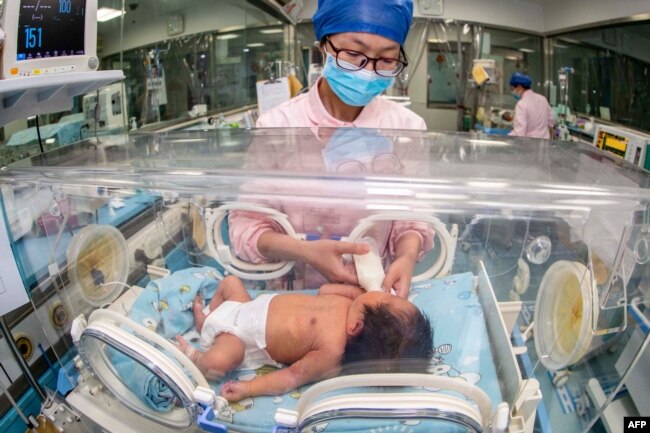China announced recently that the country’s mainland population fell by 2 million people in 2023.
This drop is the second yearly decrease in population, adding to concerns about the country’s future economic growth.
The National Bureau of Statistics said the total number of people in China dropped by 2.08 million, or 0.15 percent, to 1.409 billion in 2023. The numbers are estimates based on studies and do not include Hong Kong and Macao. China does a full population count, or census, every 10 years.
Increased deaths and decreased fertility
The number of deaths rose by 690,000 to 11.1 million, more than twice the increase recorded in 2022. Population experts said the aging of the population and COVID-19 outbreaks account for most of the rise.
But the data also suggested important information about the number of births, which fell by 540,000, or 5.6 percent. The drop was smaller than the decreases of the past three years.
Still, the decreasing birth rate suggests that the fertility rate is a long-term economic and societal problem for China.
The lower fertility rate, together with people living longer because of better health care, means China is slowly growing older.
Demographer Zuo Xuejin, formerly of the Shanghai Academy of Social Sciences, estimated that the proportion of the population that is 65 or older could double to more than 30 percent by 2050.
These population changes could slow economic growth over time.

Economic issues
High childcare and education costs are pressing issues in family planning among married Chinese. Women are having fewer babies despite government incentives and the easing of its one-child policy in recent years.
Other economic issues reduced interest in baby-making. Youth unemployment hit record highs, wages for many white-collar workers fell, and a crisis in the property sector, where more than two-thirds of household wealth is stored, grew worse.
The data adds to concerns that the world’s number two economy faces reduced growth due to fewer workers and buyers, as well as rising costs of care for old people and retirement payments.
The state-run Chinese Academy of Sciences sees the retirement system running out of money by 2035.
Zhu Guoping, a 57-year-old farmer in northwestern Gansu province, said his yearly income of about $2,779 leaves his family with little savings.
He will receive a $22 monthly pension once he turns 60.
“The money is definitely not enough,” Zhu said. “Maybe our children can provide us with some support in the future.”

Other countries
Births in China have been dropping for many years as a result of the one-child policy that was in place from 1980 to 2015. In addition, the country saw fast urbanization during that time. Large populations moved from China’s rural farms into cities where the costs of growing a family were higher.
Other countries in the region also face long-term population problems. Japan’s birth rate was 6.3 per 1,000 people in 2022, while South Korea’s rate was 4.9.
“As we have observed again and again from other low fertility countries, fertility decline is often very difficult to reverse,” University of Michigan demographer Zhou Yun said.
I’m John Russell.
John Russell adapted this story from Reuters and AP reports.
_______________________________________________
Words in This Story
proportion – n. an amount that is a part of a whole
urbanization – n. the process by which cities become larger as more and more people begin living and working in central areas
incentive — n. something that encourages a person to do something
reverse – v. to undo or negate the effect of
